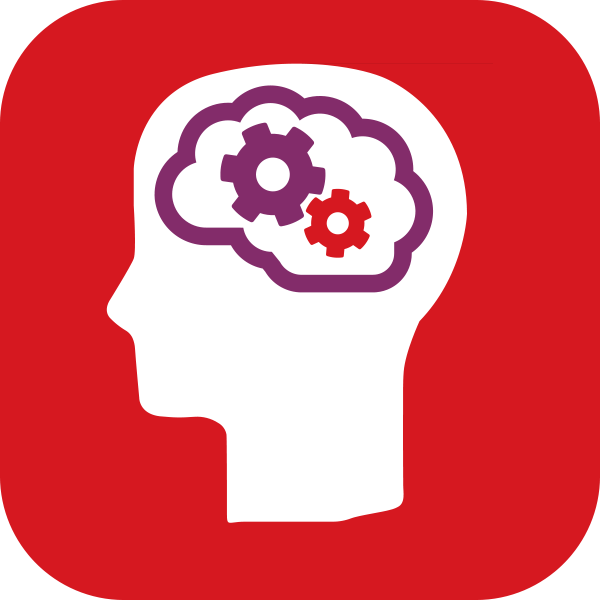
Using CAT4 to provide baseline data
Assessment has had a major part to play in the process of the school’s transformation. Previously using a range of assessments, the senior team felt that there was a lot of data being generated, but that it wasn’t always reliable or being used effectively.
The Principal at the time had used GL Education’s Cognitive Abilities Test (CAT4) in his previous school and had seen its impact, so was keen to implement the assessment across every year group at Minarah. CAT4 assesses students’ developed abilities in four areas known to make a difference to learning and achievement – verbal, non-verbal, quantitative and spatial reasoning. This allows teachers to gain an understanding of what each of their students is capable of, helping identify those who are high achievers, have the potential to achieve more and those who may need support in certain areas.
Monalisa Grover, Associate Deputy Principal Stage 3, explains more: “We were looking at different assessments to identify the strengths and weaknesses of our students and to see where there were gaps in knowledge and understanding. We were aware that some of the assessments that we used previously weren’t giving us the depth of data that we were looking for. Some of the tests could be a little tedious for the students to do, especially the young ones, so we felt that the students weren’t always trying their best. We weren’t getting robust data that correlated with the students’ actual attainment and ability, and therefore wanted to adopt a different model.”
The school began using CAT4 in February 2023, starting with a pilot and then rolling it out to over 900 students in year groups 3 and 5-12. This was followed by a second round of assessment in July for any new joiners, ensuring that the school had baseline data for all students in these year groups.
Data to support literacy programming
The first thing that Monalisa did with the CAT4 data was to use it to inform her literacy and maths planning and programming. With a high proportion of English as an Additional Language (EAL) students (around 91%), the school knew that reading comprehension could be an issue – so were keen to see what the CAT4 results showed.
Monalisa explains more: “We delivered the assessment early in the academic year, which was really helpful. I joined the school in October 2022, so the students were still new to me and I didn’t know where the cohort sat with their literacy and numeracy levels. I was given the role of looking after Stage 3 (Years 5 and 6) and had to review the cohort’s programming – so when I received the CAT4 data, I got a really clear view of where the cohort were at.
“For example, with reading, the reading benchmark test that we used to use was saying that the children were at level 22 or 24 – which is very low for this age group. If I’d gone with this data, I would have programmed reading very differently – focusing on reading strategies to build fluency, rather than what I actually ended up doing.
“The CAT4 data showed me that our cohort of students sat between Stanine 4 and Stanine 9 – so I could see that what they needed was to improve their comprehension skills. With CAT4 I could triangulate the in-school assessment data to check that the assessments weren’t too difficult or too easy for the grade. The passages given in Stage 3 vary in comprehension level and vocabulary, so the CAT4 data helped me to use the right passages that would be appropriate for the cohort and allowed me to be clear on which direction I needed to take for their reading.
“The next thing I did with the results was create reading groups. I’ve found these work best if the students are grouped with those of similar abilities, so we can target the strategies specifically to their needs. Across Years 5 and 6 I grouped the students according to their CAT4 verbal results. I divided the students into three groups – lower, middle and high – and adapted my reading strategies and programme for each group, based on where the gaps were. For some it was comprehension skills, for others it was reciprocal reading, and with the highest group we looked at analysis and writing. It worked really well.”
“ ”

Data to support gifted and talented provision
One of the key things that the school wanted to improve was their ability to identify those students who were suitable for accelerated programmes and those who needed further support.
Monalisa explains: “My next project was working with gifted and talented students. Again, being new to the grade, the only way that I could identify ability was through other school assessments. My previous experience however is that gifted and talented students don’t always take the school assessments seriously and so they could produce results that would mean their ability may be overlooked. With a test like CAT4, however, I’ve found that gifted students tend to be more likely to complete it to their best ability, as they feel it’s more challenging.
“Once I had the CAT4 data, I was able to triangulate it with our school assessment data and the NAPLAN data to identify my most gifted students. I could then work with them through the year, grouping them according to their skill levels in each of the four CAT4 batteries. At Minarah, we submit students for various competitions each year, including Decathlon and Tournament of Minds (an academic competition focusing on collaborative problem solving and critical thinking). From the data, I could see which students were the best fit for each competition, for example those with strong quantitative and spatial skills were good candidates for the Tournament of Minds.”
The data also helped to identify those students who needed intervention support. Monalisa explains: “I used CAT4 for identifying my intervention groups. Again, I triangulated the CAT4 data with NAPLAN and our school assessment, to identify those who needed further support. We saw that there were four students in year 5 who really needed intervention, and five or six in year 6. We were then able to put in place support plans for their specific needs.”
Data to identify gaps and unmask hidden ability
Deep learning pedagogies lie at the heart of Minarah College’s educational approach. Students are encouraged to actively engage with their learning, develop critical thinking skills and apply knowledge to real-world situations. The senior team wanted an assessment that would help them to identify and target gaps in the cohort, helping to review each programme to address these.
Monalisa explains: “The first programme I worked on was English. I rewrote the whole programme for the teachers and put in different strategies to help with the gaps that I saw from the CAT4 data. For example, lacking verbal skills was quite common through the group – so I put a lot of speaking and listening skills in there.”
The school could see that some students had a verbal deficit – where students have high non-verbal reasoning scores compared with low verbal reasoning. This can indicate that the student may have difficulties in reading and comprehending English – possibly as a result of being EAL – and this could be holding back their progress and attainment, and their ability to access the curriculum.
Monalisa goes on: “From the training that we received from GL Education, I knew about verbal deficit – so I could see that some students knew things but were struggling to communicate them. We were able to put in place techniques such as graphic organizers (Venn diagrams, See Think Wonder thinking pathways) to help and improve the students’ communication skills.”
The data also allowed the school to identify gifted students who otherwise might have been overlooked, and provide them with the appropriate support. Monalisa explains: “We had one student who had attained a high score in three of the CAT4 batteries, but not in verbal reasoning. He was good with maths, good with non-verbal and spatial skills – but there was a big gap with verbal. So, I was able to work with the class teacher and put in place a plan to help him develop his verbal skills. This involved putting him in small groups so the teacher could ensure he was doing a lot more paired work to encourage him to communicate with the other students.”
“ ”

Sharing data with the team
CAT4 was introduced to the teaching team and training was provided to ensure that they all had an understanding of the data and could use it as a common language throughout the school. Super-users were appointed in the junior and senior schools to mentor and guide any staff needing support.
Monalisa explains: “At the beginning we sat with my team and went through the cohort overview and looked at some of the gaps. We provided the data to the teachers to use for their lesson plans.
“A training day was provided by GL Education for the team, which they found really useful. We were shown the insights that could be gained, how the stanines work and how to compare the cohorts.”
Monalisa is also using the data to validate her own assessments. She explains: “An additional benefit from the data is that I have been able to evaluate my own assessments that were linked to our maths and literacy outcomes. I create my own assessments for the teachers – and wanted to make sure that they were at the right level. Once we started delivering the assessments, I could see that there was a correlation with the CAT4 results – thereby giving me peace of mind that my assessments were correctly levelled.”
The data has also supported some of the extracurricular work that the team do. Monalisa explains: “The data helped me with the debating group that I had to put together at the start of the year. There were some students who really stood out and their individual analysis told me that they had good debating skills.
“The data also validated the leadership team that I created for the student representative committee. I had to identify the leaders who would be head boy and head girl and used the CAT4 data to support my decision.”
In conclusion
Although the school is still in its first year of using CAT4, the impact has already been seen. With the robust and reliable information that the assessment provides, the team can make informed decisions based on data that they can trust.
Monalisa concludes: “CAT4 has given me true data on all of my students. As I was new to the school, I didn’t have a past lens to look at the kids – so it was all fresh for me. The CAT4 results gave me the certainty that I am on the right track and that I’m doing the right thing.”


